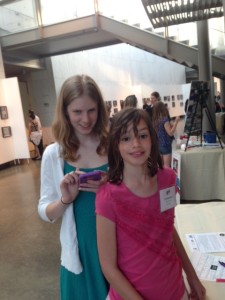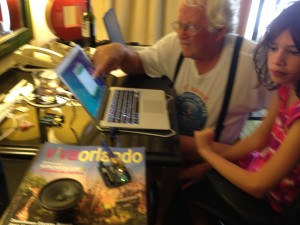I’ve come to appreciate the difficulty of project prioritization. Historically, my teams only ever really had internal customers. In some ways that makes the decision easy – you focus on the biggest revenue opportunities or impacts first. Operational issues came first, with development coming second. This problem becomes exasperated when you are in a consulting situation where there are multiple customers, with multiple customer teams and often, conflicting priorities.
At the end of the day, people want to do the right thing. Ultimately what happens when you combine a lack of project prioritization with people who are striving to “do right by the customer” is time spent on non-priority tasks or employee burnout trying to meet everyone’s needs. Neither one of these outcomes is optimal for teams.
In our personal lives, we make prioritization decisions everyday. Most often we put things we need to do (i.e. eat, take care of children, work to support family) before other things (i.e. sleep, exercise). This may not be the best long-term decision, but it is the best decision we can make at the time it comes up. The nature of business complicates this problem significantly as ever customer needs to be treated with respect. Each customers’ problems are the most important to them. If every organization had infinite resources, dedicated teams could exist to service each customer.
Unfortunately, resources are limited and you have to make trade-offs. People do understand this. They may not like it, but it ultimately comes down to how well you set and manage those expectations. An organization should evaluate their core values and align their prioritization methodology to it. While large and small customers should not necessarily be treated the same, it is important to make sure that you have a strategy for handling both sets of customers. This exercise must be re-evaluated on a regular basis. Some common prioritization considerations include: customer size, project duration, complexity, strategic project nature.
Customer Size: This really comes down to revenue. Your largest customers bring the most money to the organization and therefore need to be kept happy. Sometimes, some creative solutions might need to be introduced. This might be dedicating a team to customers over a particular size, or providing on call services to these select. As I mentioned before, the downside of this is you can’t do this at the expense of all your other customers. They won’t be ignored.
Project duration: If you can focus on a project, get it done quickly and make a big impact, there is value to making this a priority. There is a risk to constantly pulling resources in and out of new projects. You might want to consider a roaming “quick-hit” resource squad to rotate through these types of projects. It can be a great way for more junior resources to learn and grow, continuously being introduced to new case studies. Duration can also negatively impact prioritization as covered by complexity.
Complexity: Complexity is an interesting consideration. Who defines it and how does this impact how you use your resources? A project might be considered complex if it is something you have never done before; or it has quite a few moving pieces and is expected to take a really long time to complete. Additional complexities might have to do with hard deadlines outside your control. One way to minimize the impact of complexity on prioritization is to separate a complex project into more manageable mini projects. You can then prioritize based on your other factors. There may be a few cases where you will need to evaluate project complexity as a factor. This may increase prioritization of the project in order to meet strict deadlines, or it may reduce prioritization of the project given the state of other business and projects.
Strategic Project Nature: We all are aware of opportunities that come along and introduce us to a new market, technology or methodology. These can come from the large customer looking to push the limits, or a small customer willing to take a gamble on us. The upside of these types of projects can be significant, but if things go wrong the project could impact project duration, revenue, and resource allocation.
Once you have your prioritization factors, you need to decide how to weigh them. Giving each consideration equal weighting does simplify the process, but that may not work given your customer and project mix. You might be in the middle of a pivot and need to put greater emphasis on the strategic project nature than you do on customer size. You also need to determine your scale for assigning value for each prioritization factor to each customer or project. This can be as simple as rank order for the number of projects or customers. It could also be a simple 1-n scale, with n equal to 5 or even the number of factors you are using. For both weight and scale, make a decision and move forward.
This is an evolving process, so define a few prioritization factors as a starting point. Once you choose your weight and scale, you have a solid prioritization methodology. Apply this to your customers and projects. You should start seeing the benefits within a few weeks. Projects should finish and your ability to set and meet expectations of your customers should improve. Feedback from your customers will deliver the biggest set of data points. Adjust accordingly.
 At the end of the day, I believe that being involved with technology will provide better lives for my daughters, and a bigger impact on the world. While Cayla isn’t ready to sit down and program a website, she is willing to support her sister. I have brought them to a couple recent STEM symposiums and showcases. Cayla does a great job encouraging Ana and stepping in when Ana is feeling a bit shy and overwhelmed. I hope that Cayla continues to appreciate the technology and become open to the possibilities. Let her be her sister’s mentor and advocate. We all have our own path’s to technology.
At the end of the day, I believe that being involved with technology will provide better lives for my daughters, and a bigger impact on the world. While Cayla isn’t ready to sit down and program a website, she is willing to support her sister. I have brought them to a couple recent STEM symposiums and showcases. Cayla does a great job encouraging Ana and stepping in when Ana is feeling a bit shy and overwhelmed. I hope that Cayla continues to appreciate the technology and become open to the possibilities. Let her be her sister’s mentor and advocate. We all have our own path’s to technology.